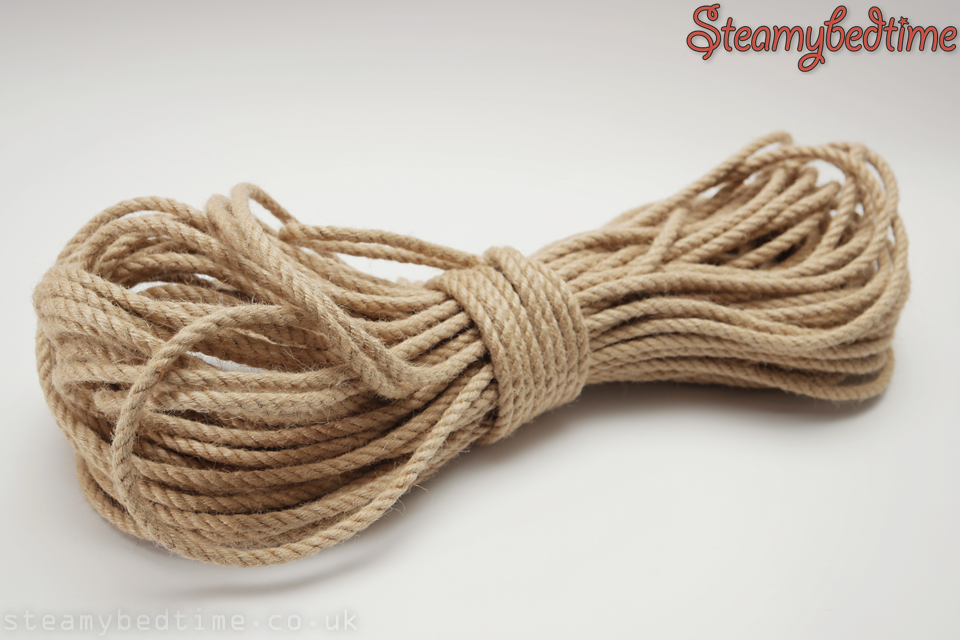We recently reviewed Shin Nawakiri's book, Essence of Shibari, and had been keen to experiment with the information in section 2.4 which is titled Treatment and Maintenance of Rope. In this section he describes his approach to processing raw jute.
In summary the steps are as follows.
- Boiling
- Drying
- Singeing
- Oiling
So far as we could, we stuck to the guidance in the book - although for practical reasons we had to improvise in a couple of places.
We found Essence of Shibari to be an excellent guide book for a couple with our experience - we're relatively new to this style of erotic rope play. We wrote up a review here: Shin Nawakiri's Essence of Shibari.
High quality jute rope is not especially cheap and since this was an experimental first attempt at following this wet treatment method, we spent some time tracking down a length of budget priced jute to practice on. Our requirements were for a clean, even rope, a fairly tight lay that would suit the wet treatment, and obviously a decent quality-to-cost ratio.
(If you would like to get started without all this faff, we'd recommend taking a look at Esinem Rope. You'll find some beautiful ropes, many of which will need fairly minimal preparation.)
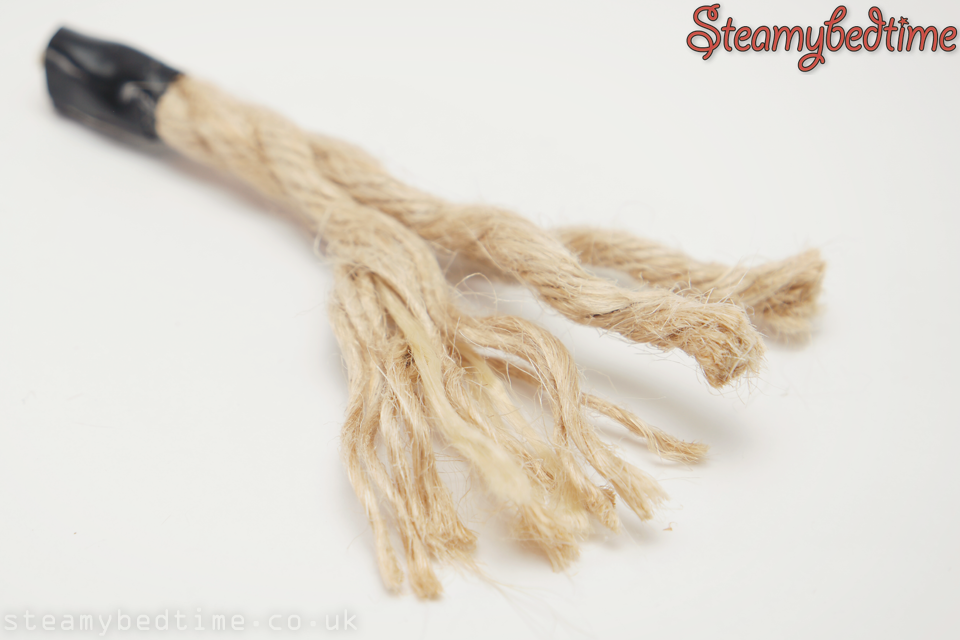
In the photo above we show a close up detail of a few inches of rope that we cut from the end of the line. Each strand of the three ply twist looks like it is made up of about 12 yarns. It's sold as 6mm, but feels just a little thinner than our other ropes. Perhaps worth noting here that once our treatment process was complete, it's looking much more like 5mm, and we noticed around 6% reduction in length during the treatment, even though we dried the rope under a fair amount of tension.
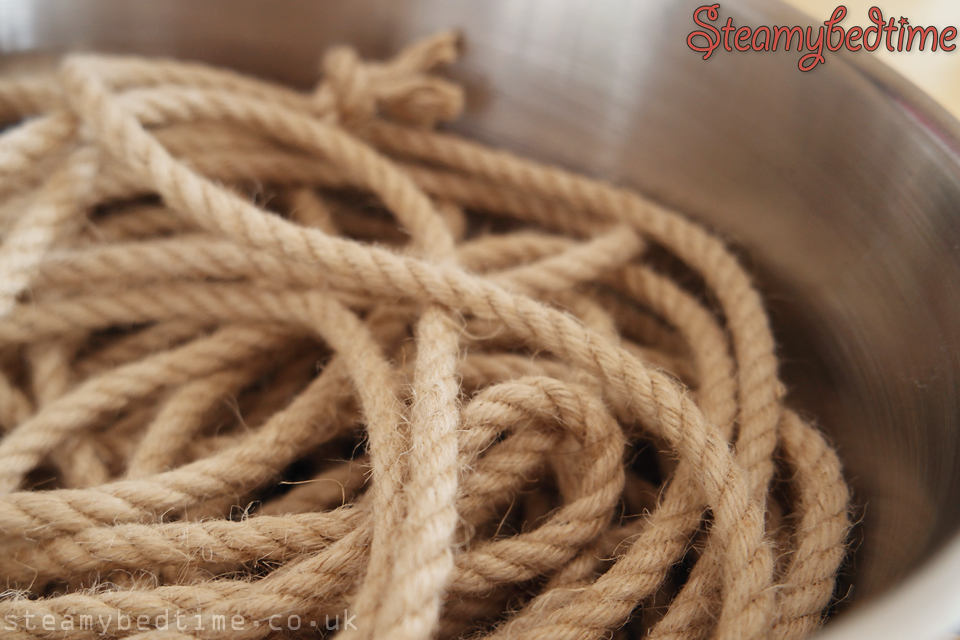
At this initial pre-treatment stage the rope was feeling rough, very dry, and far too stiff to be of any practical use for what we had in mind. And so, onto the process: stage one, "Boiling".
Boiling
Unfortunately we ran into our first hurdle almost immediately. The full length of rope seemed to fit ok into our largest pasta saucepan, but as soon as water was added it all went strangely rigid, sticking out in all kinds of uncooperative loops and it was impossible to submerge the rope. This was not a very auspicious start, and because we didn't want to cut the rope and treat it in separate batches, we ended up putting it into a 30 minute high-temperature wash in the dishwasher. (This runs at 65 Celcius.)
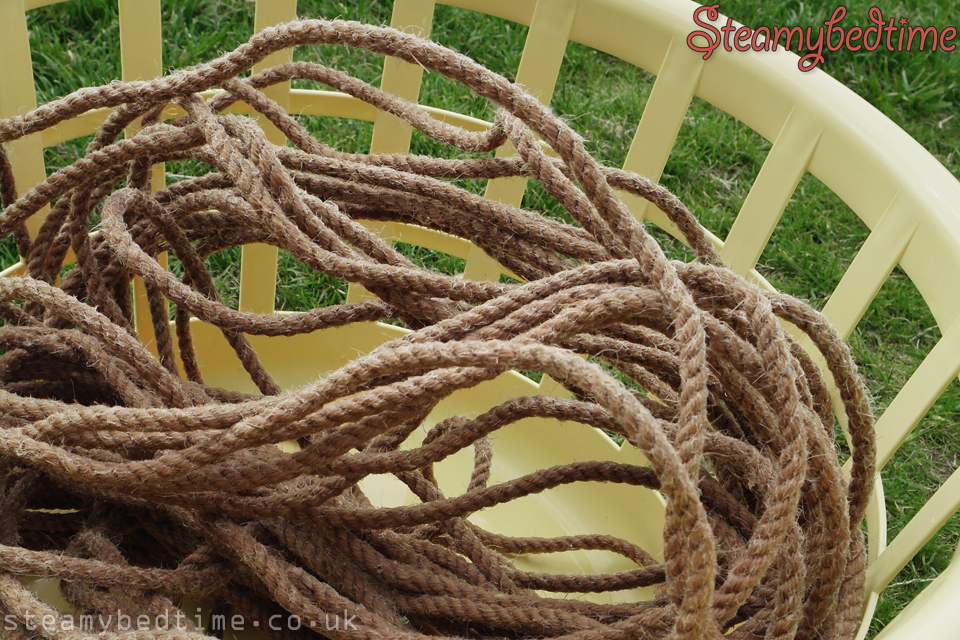
This seemed to work absolutely fine, and is a technique I'd seen recommended in the ShibariClasses course, Rope Care and Treatment. So far, so good, and so it was time to move onto stage two, "Drying".
Drying
I wasn't expecting the wet rope to behave as it did, so that's probably something to be aware of. It was quite stiff, kinked, and generally not looking all that great. The advice in the book is to hang the rope to dry, but based on previous research (and because it was a lovely warm day!) we decided to string it out in the garden and let it dry under tension.
It took nearly three passes across the garden to get the rope stretched out to dry. We then used paracord tied to the end knot to keep the tension and tie off the far end of the rope. I think that's a good tip - have some cord or spare rope close at hand because the end is inevitably going to finish up in the middle of the lawn where there is nowhere to tie it off.
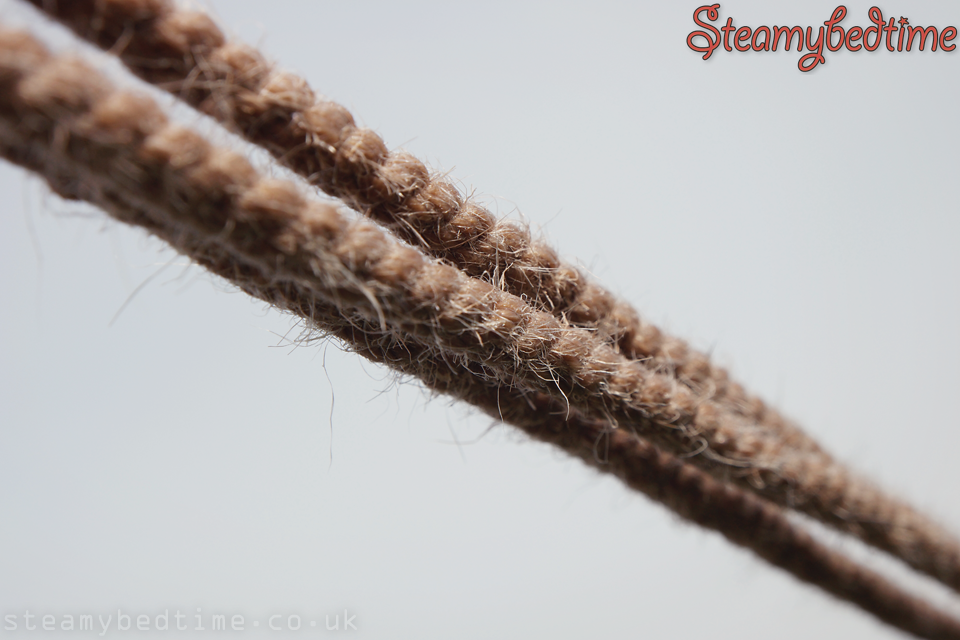
Without going too crazy we pulled it taught across the garden, wrapping around smooth wooden fence posts to try and avoid aggressive bends. After an hour or so the lines seemed to be sagging, so we re-stretched it and it remained tight until it was fully dry. It was time to move onto stage three, "Singeing".
Singeing
For this stage we used our gas hob. Shin Nawakiri advises being very meticulous in the burning off phase. We followed this advice, moving slowly and twisting the rope as it moved through the flame.
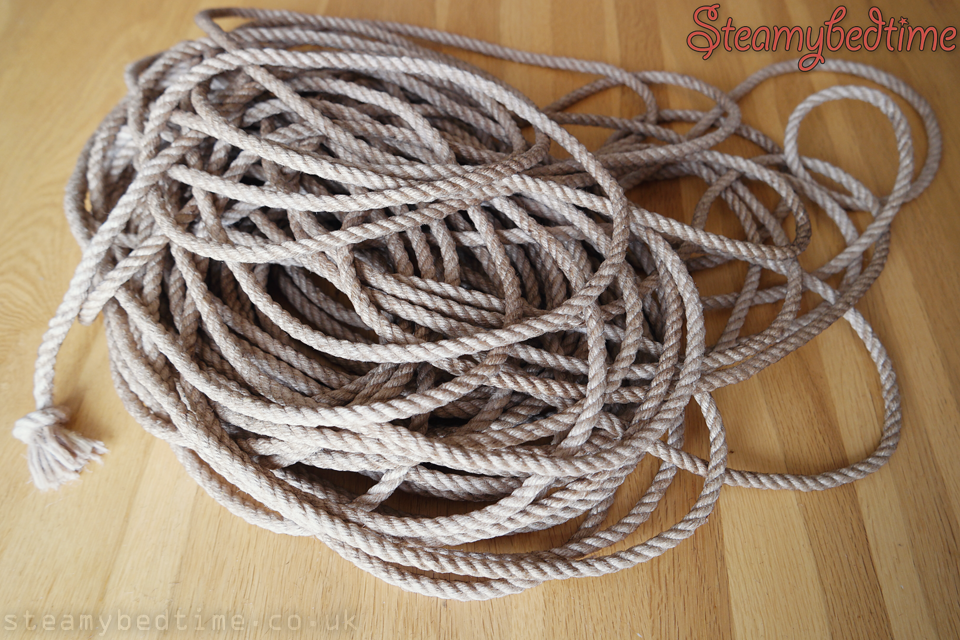
While drying outside, the rope had become very fluffy, rather scruffy looking, but this phase got everything looking smooth and also slightly darker in appearance. After a wipe down with a cleaning cloth, the rope was really starting to look nice. Fairly soft and feeling loose and flexible. And so to the final stage, "Oiling".
Oiling
The book makes numerous suggestions on types of oil and methods. We highly recommend purchasing a copy, check out our earlier review, and you might find some of the alternative oiling methods work better for you. However, since we already had some of our homemade preparation of natural beeswax, golden jojoba and jasmine essential oil, we decided to use that. With the rope still in one long piece, we massaged it lightly with our wax-paste and finished off by rubbing it down with a cotton cloth, lightly drizzled with jojoba oil.
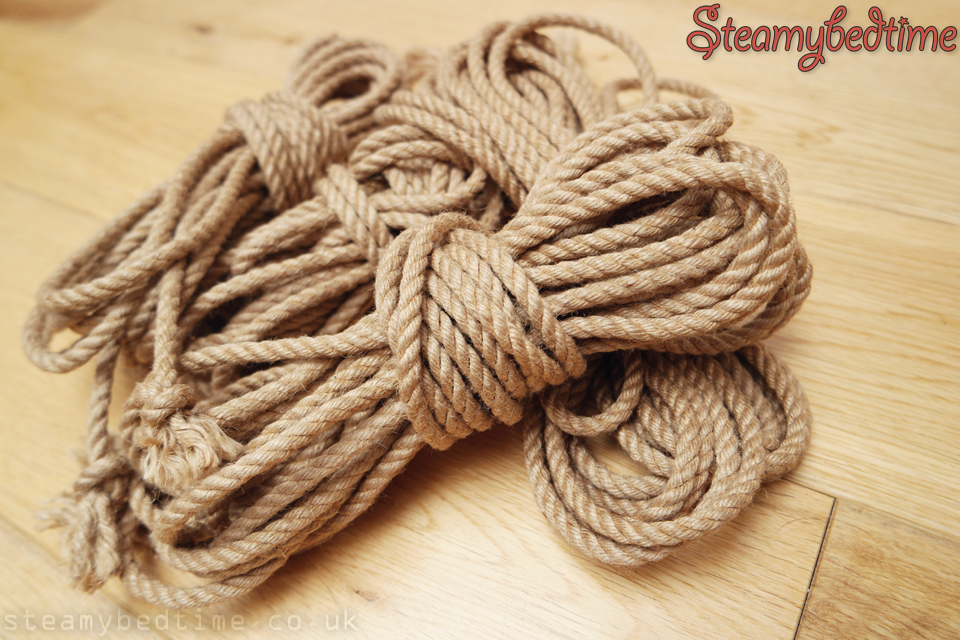
And so at the end of our process we were left with four 8m hanks of really nice looking shibari rope. We'd kept some of the rope back for other future testing (possibly some colour dye experimentation too!) so what began here as 36m of washed rope ended up being a little over 33m. Cut down, and taking the end knots into account, each piece is a little over 8m in length.
As a final footnote I will add that we have since given the ropes a further rub with our wax mixture and finished with another brief singe to clean up the last remaining fuzziness. Even over a clean-burning gas hob there is a little sootiness, so we wiped them down with a few sterile saline wipes (as you'd find in a first aid kit, etc) and they are looking and feeling great.
Summary
In conclusion, we were delighted by the success of this first attempt at a wet treatment of some jute. I don't think the quality is as good as our first set of ropes, see our earlier Okinawa Jute article, but we've ended up with some very useable rope and have the satisfaction of having stepped through the entire treatment sequence.
If you are looking for resources to support this type of process:
- Our earlier book review: Shin Nawakiri's Essence of Shibari
- Free course at ShibariClasses: Rope Care and Treatment
Overall we've been delighted with the finished ropes, and for a first effort this has been a fabulous result for us. We were a little nervous that things might go wrong and the ropes would be ruined, but it was a really straightforward process. We'd encourage anyone else to give it a try! :-)
